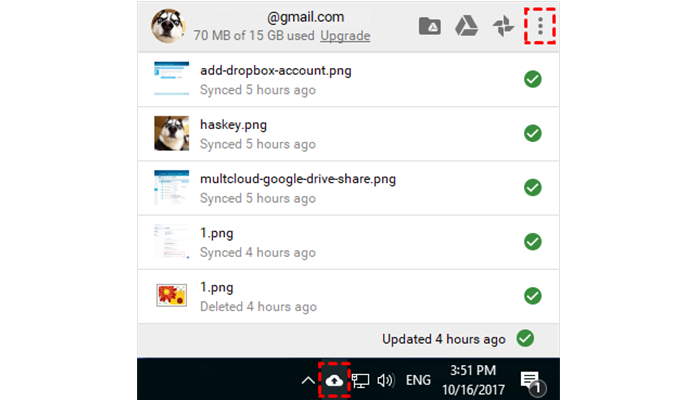

- #How to sub a google drive file with windows backup and sync how to#
- #How to sub a google drive file with windows backup and sync full#
- #How to sub a google drive file with windows backup and sync windows 10#
- #How to sub a google drive file with windows backup and sync free#
Improve backup disk full issue: You can compress backup image to smaller one, backup only used sectors of file system or changed files every time, etc. Below are some advantages of it: Backup files automatically: You can continuously backup files or folders (daily, weekly, monthly schedule backup) to keep all the changes made in the previous backup. To ensure your data is always backed up and safe, you need to use a reliable folder backup software like AOMEI Backupper Standard for backup. Meanwhile, there are many file history errors, such as, your file history drive is disconnected, file history does not recognize this drive, etc. However, you may find your files are not backed up after days later and it's apparently running with “File History is saving copies of your files”.
#How to sub a google drive file with windows backup and sync windows 10#
To be honest, Windows 10 file history has made great progress, allowing you to backup certain folders. Safer Way to Backup Certain Folders in Windows 10 The simplest way is to right-click a file or folder and select "Restore previous versions", then select a backup version and click "Restore" to get your data back. Now, you already have a file history backup, you can restore file when needed. Note: You are also allowed to exclude specific folder by " Exclude these folders" option. Afterward, click Back up now at the top location and start your first file backup. Click " Add a folder" under the Back up these folders setion and choose specifc folder you want to backup in Windows 10.

It means File History will delete the oldest versions when files reach that time setting. Other timeframes, from 1 month to 2 years. It means File History will automatically remove the oldest versions of the files it backs up when space gets low on your backup drive. At that point, you'd have to either use a different drive or manually start a cleanup from the Control Panel (under System and Security > File History > Advanced Settings) to make space. It means File History will keep making and saving backups until your drive is full. ★ Pay attention to the following 3 retention options: Forever. Click More options to set file history backup settings. By default, the backup interval is " Every hour" while backup retention is " Forever". Then, you will see an on/off button under a new link "Automatically back up my files" and turn it on if it shows off. In the initial backup window, click " + Add a drive" button and select the prepared external hard drive. Then, directly type “ file history” in the search box and choose " Backup settings" from the final result list. Connect an external hard drive to your computer and make sure it can be detected. If you want to backup system, you can use "Backup and Restore (Windows 7)" in the backup settings. Turn on File History in Windows 10 and automatically backup files from one folder to another with the following steps.
#How to sub a google drive file with windows backup and sync how to#
How to Backup specific folders in Windows 10 using File History
#How to sub a google drive file with windows backup and sync free#
As for how to backup it, you can use Windows 10 file history or third-party free backup software like AOMEI Backupper. To avoid data loss, you need to backup files or folders in advance. In addition, if you don't create a file history backup, you may lose your files once and forever when something unexpected happens, such as, disk failure, virus, malware, fire, flood etc. For users who use some folders on a regular basis are likely to change files, add files, delete files on these folders.

Why backup specific folders in Windows 10?Īs known, the most obvious advantage of backing up files or folders in Windows 10 is to ensure data security and keep files up-to-date. Unlike previous versions, Windows 10 file history add a new feature called "Add a Folder" that can help users backup specific folders. After a period of time, you will have many previous versions of Windows 10 data so that you can get back in time. What's more, you backup files on Windows 10 external hard drive, network location, USB flash drive. It will monitor the changes for backed up files, whether deleted or added, then backup automatically.

Like Windows 8/8.1, Windows 10 has a built-in file backup tool, File History, which help users automatic backup all the folders saved on user account folders as well as files in subfolders.


 0 kommentar(er)
0 kommentar(er)
